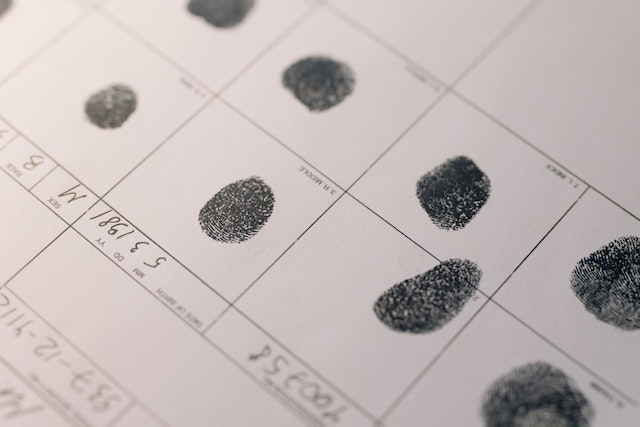Every time you connect to a website, you leave behind a "digital fingerprint." This isn't about your actual fingerprints, but a unique collection of data points from your device and browser. Security tools analyze this fingerprint—which includes your IP address, browser type, operating system, supported fonts, and even subtle characteristics of your network connection (TLS fingerprinting)—to distinguish legitimate users from malicious bots.
For years, this was a reliable way to spot automated threats. Bots had clumsy, inconsistent fingerprints that made them easy to identify. But today, attackers have access to a powerful combination of tools designed to perfectly mimic real users, making them virtually invisible to traditional defenses. The two most important components of this modern "invisibility cloak" are residential proxies and anti-detect browsers.
What Are Residential Proxies?
A residential proxy is an intermediary server that uses an IP address assigned by an Internet Service Provider (ISP) to a real home internet connection. When a bot routes its traffic through a residential proxy, its requests appear to originate from a genuine home user, not a data center.
These proxy networks are vast, often containing millions of IP addresses sourced from around the globe. How are these IPs obtained? Often through questionable means:
- Malware and Botnets: Unsuspecting users' devices are infected with malware that turns them into proxy endpoints.
- SDKs in Free Apps: Some free applications (often VPNs or mobile apps) include code that enrolls the user's device into a proxy network in exchange for using the app, often without the user's full knowledge or consent.
By rotating through this massive pool of legitimate-looking IPs, attackers can launch large-scale attacks that are incredibly difficult to detect. To a website's security system, a distributed attack from a residential proxy network looks like thousands of individual customers from different locations.
What Are Anti-Detect Browsers?
While residential proxies mask the attacker's network location, anti-detect browsers are designed to spoof the rest of the digital fingerprint. These specialized browsers allow an attacker to create and manage thousands of unique browser profiles, each with a perfectly customized and consistent fingerprint.
An anti-detect browser can control and randomize every detail a website uses for identification, including:
- Browser type and version (e.g., Chrome, Firefox, Safari)
- Operating system (Windows, macOS, iOS, Android)
- Screen resolution, fonts, and plugins
- Time zone and language settings
- Subtle browser characteristics like Canvas and WebGL rendering
With a few clicks, an attacker can make a single machine in one country appear as thousands of unique, real users on different devices and operating systems from all over the world.
The Combined Threat: A Perfect Storm for Attacks
When attackers combine residential proxies with anti-detect browsers, they create the perfect storm for evading security. The residential proxy provides a legitimate IP address, and the anti-detect browser provides a perfect, human-looking browser fingerprint.
This combination makes sophisticated attacks like large-scale credential stuffing, content scraping, and inventory scalping nearly indistinguishable from legitimate user traffic. Each malicious request appears to be from a unique, real person on a standard device, using a normal home internet connection.
Why Traditional Defenses Fail and What to Do About It
This new level of sophistication renders traditional security measures obsolete:
- IP Blocklists and Reputation Services: These are useless when attackers are using a constantly rotating pool of millions of legitimate residential IP addresses. Our own research shows that even the best IP intelligence services fail to detect the vast majority of residential proxy traffic.
- Basic Browser Fingerprinting: Anti-detect browsers are specifically designed to defeat these checks by providing a consistent and realistic fingerprint.
To combat this combined threat, organizations need a modern approach to bot detection that looks beyond the surface:
- Advanced Network Fingerprinting: Instead of just looking at the IP address, modern solutions analyze the underlying characteristics of the network connection itself (like the TLS/JA3 fingerprint). These signatures can often identify the underlying automation tool or proxy network, even when the IP address appears legitimate.
- Behavioural Analysis: Advanced systems model normal user behaviour—such as mouse movements, typing speed, and page navigation—to identify the subtle, non-human patterns of automation that even sophisticated bots can't perfectly mimic.
- Hardware and Rendering Fingerprinting: While anti-detect browsers can spoof software-level details, faking the underlying hardware is far more difficult. Advanced techniques, such as those used in Google's Picasso, analyze how a device renders graphics (e.g., Canvas and WebGL), processes audio, and performs CPU-intensive tasks. This creates a hardware fingerprint based on the unique characteristics of the GPU, audio stack, and CPU clock speed. This fingerprint can reveal inconsistencies between the claimed browser profile and the actual hardware being used. When combined with network fingerprinting and residential proxy detection, this becomes a powerful signal for identifying a single machine attempting to impersonate many different users.
- Dedicated Residential Proxy Detection: Specialized techniques are required to identify traffic coming from residential proxy networks. This is a critical signal, as very few legitimate users have a reason to route their traffic this way.
In the face of attackers armed with invisibility cloaks, security teams must adopt deeper, more intelligent methods of detection. By focusing on the immutable characteristics of network connections, hardware fingerprints, and the subtle tells of automated behaviour, it's still possible to see the bot behind the curtain.







